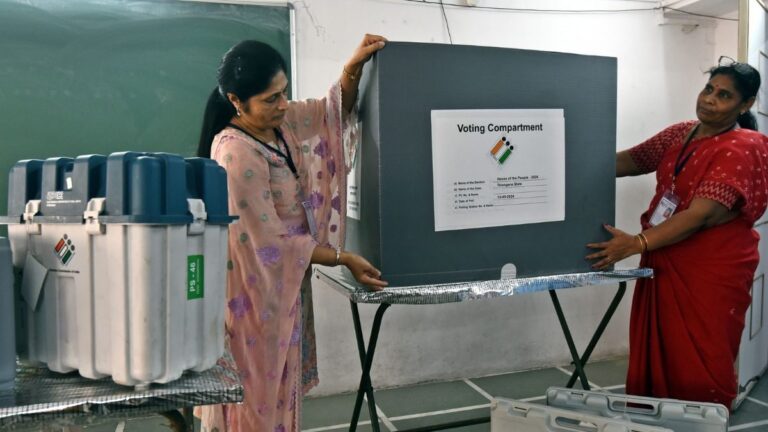This is a critical moment for Congress. Will it be able to surpass the psychologically important 54 seats needed to win the opposition leader’s post in parliament? The fourth phase of Lok Sabha elections will decide this. If voters comply, the vote could give Congress the most seats in the House of Representatives in a decade.
At least 1.77 crore voters across 96 seats in 10 states and union territories have answers to the above questions. In the 2019 general election, the BJP won 42 of these seats. Almost all the remaining seats were won by the opposition parties, with the Congress winning 6 seats and the YSRCP 22 seats.
When you consider the statistics, one fact is clearest of all. The opposition has the most to prove and the most to lose.
First, the BJP is not the most dominant at this stage. Just like in the first phase, the opposition has a chance to contain the Bharatiya Janata Party. But it has to be done through the skin. This is because opposition parties, including non-India bloc parties, have won the most number of contested seats, although the BJP came in a close second in 2019.
Yes, just over a quarter of the seats are swing seats. Of the 21 floating seats, 11 were won with less than 1 percent of the vote. Of these 11 seats, only two were held by the Bharatiya Janata Party: Bardhaman-Durgapur in West Bengal and Khajuraho in Jharkhand. Opposition parties are therefore more susceptible to voter dissatisfaction.
Thirdly, of the 20 strongholds (seats that no party has lost since 2009) or one-fifth of the seats scheduled to go to polls in the fourth phase, the BJP and opposition parties won 10 seats each. . In other words, the Bharatiya Janata Party, which has dominated every election since 2009 across these seats, is in the same position as the opposition.
This is a remarkable achievement for a party that won this seat, which was little more than an emerging alternative in four states – Odisha, Bengal, Andhra Pradesh and Telangana – a decade ago. There is little reason for the Bharatiya Janata Party’s upward trajectory to reverse in these states, especially as the Congress, where the Bharatiya Janata Party has a strong winning record, is in terminal decline across these seats at the Sabah state level. . Moreover, the wicket of political parties other than the Congress is also unstable. In 2009, the parliament won 50 seats. Ten years later, in 2019, it lost all but six seats in the fourth stage.
Fourth, if the Congress needs to improve its tally across the country, it needs to win big in Telangana. This southern state will be dreaming of the future of this great old party, which won a landslide victory in the parliamentary elections just six months ago. However, the state’s 17 Lok Sabha seats are also attracting attention from the BJP, whose fortunes are on the rise. The saffron party is trying to prove that the state is acceptable to all the people and believes it will be the next big breakthrough constituency in the south.
The struggle for prestige between the Congress and the Bharatiya Janata Party in Telangana is complicated by the presence of a third party, the BRS. The party, led by the regionally powerful Nawab K. Chandrasekhar Rao (KCR), not only remained the ruling party until 2023, but also won the most seats in the Lok Sabha since 2014. BRS won the trust of voters because it defended the right to vote. Independent states are currently fighting for their survival on the back of overwhelming performance at the state level. Disillusioned voters who turned their backs on BRS last year are now looking elsewhere.
The BJP hopes to win most of the 35% votes polled by BRS in 2019. The BJP won 9% of the votes in 2019, giving the Bharatiya Janata Party four seats. Even if it manages to get one-third of the BRS floating votes, the BJP could double its votes this time.
Given that many BRS voters have strong anti-Congress tendencies as the BJP has historically been their arch-rival, it is very likely that they will shift their holdings to the BJP. Especially since it is a national election. This is exactly what happened in the 2014 and 2019 assembly polls in Bengal, where CPM voters, fighting an existential war with the TMC, turned out to be the then-new He moved to the Bharatiya Janata Party, an option that had been floated.
On paper, the NDA has almost the same number of votes as the YSRCP. Nevertheless, many believe that even if the NDA falters, the post-poll scenario will favor the BJP. The main reason for this is that the YSRCP, which won 22 seats in 2019, did not rely on alliances in the past 10 years. It has broken out of the opposition camp and supported the NDA at the Center at several key junctures. There is no reason to continue abandoning politically expedient methods.
The Indian bloc, especially the Congress, will recognize these five elements as key to the fourth phase.

